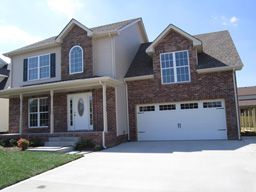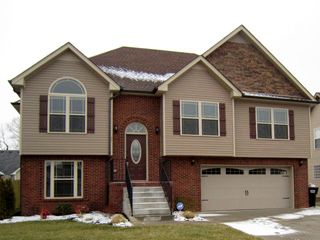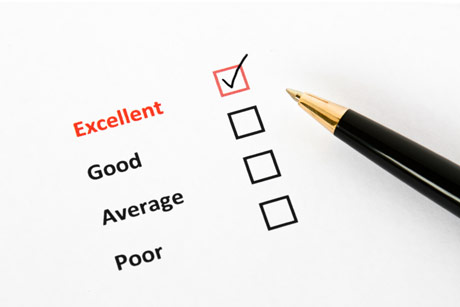Article From HouseLogic.com
By: Mike DeSenne
Published: February 22, 2010
From energy tax credits to vacation home deductions, check out these tax tips for homeowners looking ahead to 2010 returns.
Tax planning for homeowners should start well in advance of the April 15 filing deadline each year. If you delay until the last minute, it might be too late to maximize tax credits and tax deductions. These tax tips for homeowners looking ahead to 2010 returns explain some of the things you can do now that'll pay off later on your 1040.
Take a day to formulate a tax plan for the year. Depending on your circumstances, you might want to take advantage of energy tax credits or max out your vacation home deductions. The "What's New in 2010" section of IRS Publication 17 (http://www.irs.gov/publications/p17/index.html) offers a sneak peek at tax changes that might affect homeowners.
Claim remaining energy tax credits
It's time to get cracking if you didn't exhaust your full allotment of residential energy tax credits (http://www.houselogic.com/articles/claim-your-residential-energy-tax-credits/) during 2009. Although tax credits for big projects like residential wind turbines and solar energy systems have no upper limit and are good through 2016, energy tax credits capped at $1,500 expire at the end of 2010. Eligible capped projects include new windows and doors, insulation, roofing, water heaters, HVAC, and biomass stoves.
Here's how it works with capped federal credits: You can earn energy tax credits worth 30% of the cost of qualifying improvements (http://www.energystar.gov/index.cfm?c=tax_credits.tx_index), but the total tax credits can't exceed $1,500 combined for 2009 and 2010. So if you only took, say, $700 worth of capped energy credits on your 2009 tax return, you're still due for another $800 in credits in 2010. Some projects include the cost of installation--a furnace, for example--while others, such as insulation, are limited to the cost of materials.
Max out tax benefits of a vacation home
Use a vacation home wisely, and it'll provide a break from taxes as well as the hustle and bustle of everyday life. The rules on tax deductions for vacation homes (http://www.houselogic.com/articles/tax-deductions-vacation-homes/) can get a bit tricky, but understanding and adhering to them can yield many happy tax returns.
If your vacation home is truly a vacation home meant for your personal enjoyment, as opposed to a rental-only income property, you can usually deduct mortgage interest and real estate taxes, just as you would on your main home. You can even rent out the home for up to 14 days during the year without getting taxed on the rental income. Not bad.
Now, let's say you want to rent out your vacation home for more than 14 days in 2010, but also use it yourself from time to time. To maximize the tax benefits, you need to keep tabs on how many days you use your vacation home. By restricting your annual personal use to fewer than 15 days (or 10% of total rental days, whichever is greater), you can treat your vacation home as a rental-only income property for tax purposes.
Why is that a big deal? In addition to mortgage interest and real estate taxes, rental-only income properties are eligible for a slew of other tax deductions for everything from utilities and condo fees to housecleaning and repairs. Deductions are limited once personal use exceeds 14 days (or 10% of total rental days), so get out your calendar now to strategically plot your vacations.
Take advantage of tax breaks for the military
In salute to members of the armed forces serving overseas who want to purchase a home, the IRS is extending a lucrative tax perk for military personnel (http://www.irs.gov/newsroom/article/0,,id=215594,00.html). If you spent at least 90 days abroad performing qualified duty between Jan. 1, 2009, and April 30, 2010, you have an extra year to earn a homebuyer tax credit. In addition to uniformed service members, workers in the Foreign Service and in the intelligence community are eligible.
Thanks to this extension of the homebuyer tax credit (http://www.houselogic.com/articles/claim-your-homebuyer-tax-credits/), qualifying military personnel have until April 30, 2011, to sign a contract on a new home. The deal must close before July 1, 2011. Just like non-military buyers, first-time homebuyers can earn a tax credit worth up to $8,000, and longtime homeowners can earn a credit of up to $6,500. The same income restrictions and $800,000 cap on home prices apply.
Military personnel can also get a break if official duty calls and they're forced to move for an extended period. Normally, the homebuyer tax credit needs to be repaid if you sell your home within three years, but this requirement is waived for uniformed service members, Foreign Service workers, and intelligence community personnel. The new extended duty posting doesn't need to be overseas, but it must be at least 50 miles from your principal residence.
Challenge your real estate assessment
You can't do much about the rate at which your home is taxed, but you can try to do something about how your home is valued for taxation purposes in 2010. The process varies depending where you live, but in general local governments conduct a periodic real estate assessment to determine how much your home is worth. That real estate assessment figure is used to calculate your property tax bill.
You can usually appeal your real estate assessment (http://www.houselogic.com/articles/appeal-your-property-tax-bill/) if you think it's too high. Contact your local assessor's office to find out the procedure, and be prepared to do some research. There's often no charge to request a review of your assessment.
Look for errors. You probably received an assessment letter in the mail, and many local governments provide the information online as well. Make sure the number of bedrooms and bathrooms is accurate, and the lot size is correct. Also check the assessed value of comparable homes in your area. If they're being assessed for less than your home, you might have a case for relief.
Even if your assessment is accurate and comparable homes are being taxed at the same rate, there might be another route to tax savings. Ask your assessor's office about available property tax exemptions (http://www.houselogic.com/articles/common-property-tax-exemptions/). Local governments often give breaks to seniors, veterans, and the disabled, among others.
This article provides general information about tax laws and consequences, but is not intended to be relied upon by readers as tax or legal advice applicable to particular transactions or circumstances. Consult a tax professional for such advice; tax laws may vary by jurisdiction.
Mike DeSenne is Online Managing Editor for taxes, finances, and insurance at HouseLogic.com, and the former Executive Editor of SmartMoney.com. He likes to do his taxes by hand, much to the dismay of his accountant.















